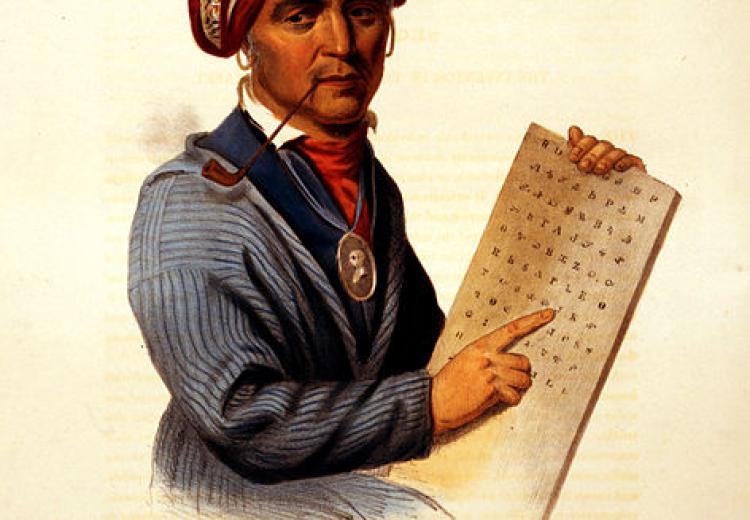Who Belongs on the Frontier: Cherokee Removal

Sequoyah, inventor of the Cherokee syllabary, 1836.
What happens when two cultures begin working and living side by side? How can people adapt technologies and ideas to serve their own needs? This lesson introduces students to the ways that communication and conflict between the Cherokee and the United States forced the Cherokee into new social, political, legal and geographic frontiers. Students use primary documents including maps and interviews with displaced Cherokees to learn how and why their society changed drastically during the 18th and 19th centuries, as well as to gain new perspectives on what leads to social and cultural innovations.
Guiding Questions
What are the lasting impacts of Cherokee Removal?
How have Cherokee adapted to new political and economic frontiers?
What developments forced Cherokee migration into the Oklahoma Territory?
Who were the Cherokee who pioneered new ideas and ways of living before and during removal?
Learning Objectives
Explore the context and motivations behind the policy of Cherokee Removal.
Examine primary documents from the Trail of Tears to understand how the Cherokee were forced to change their culture and society during and after removal .
Analyze the ways in which Cherokee people adapted new technology and ideas both before and after removal.
